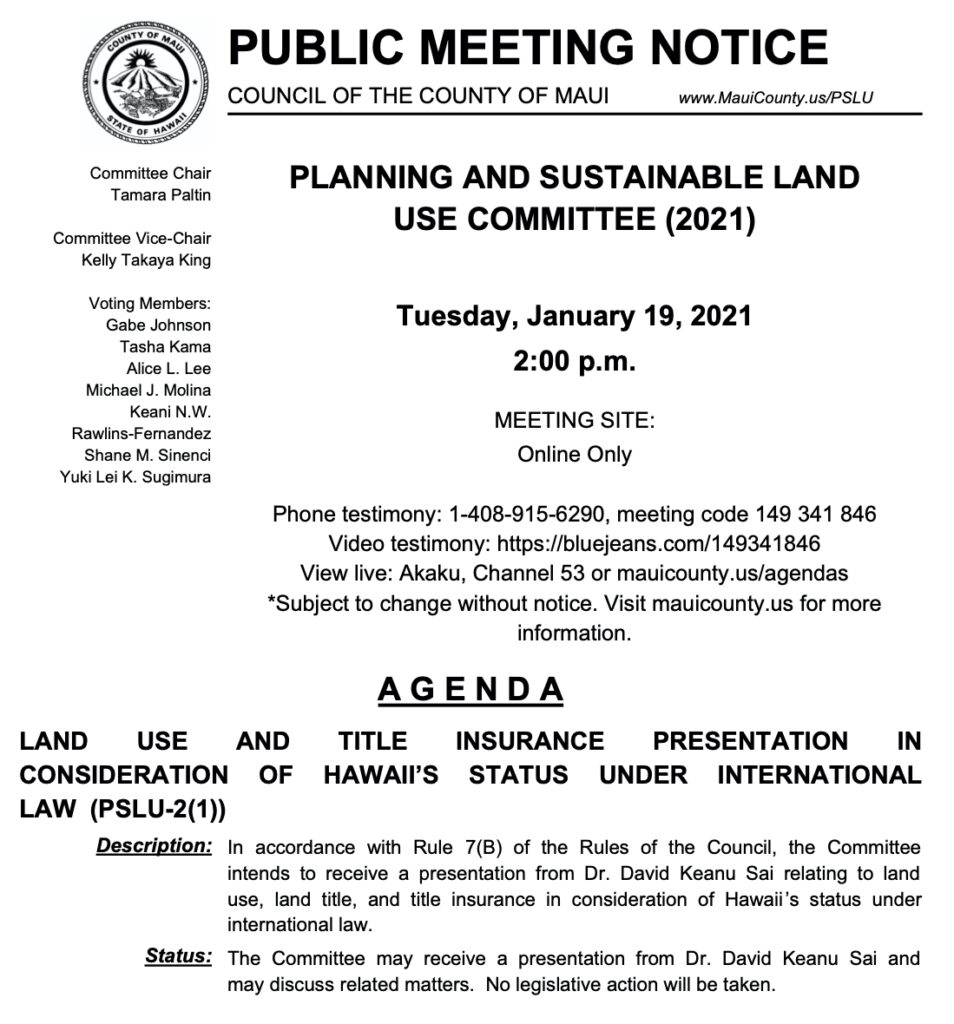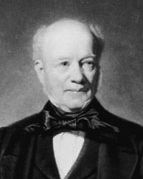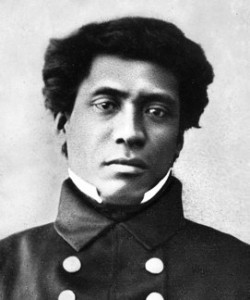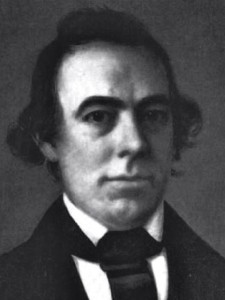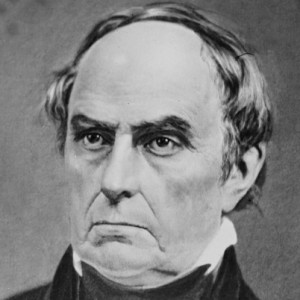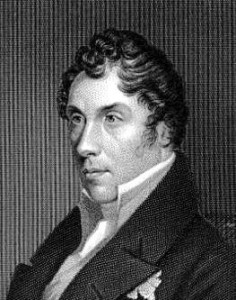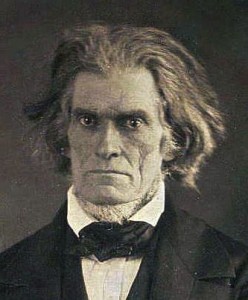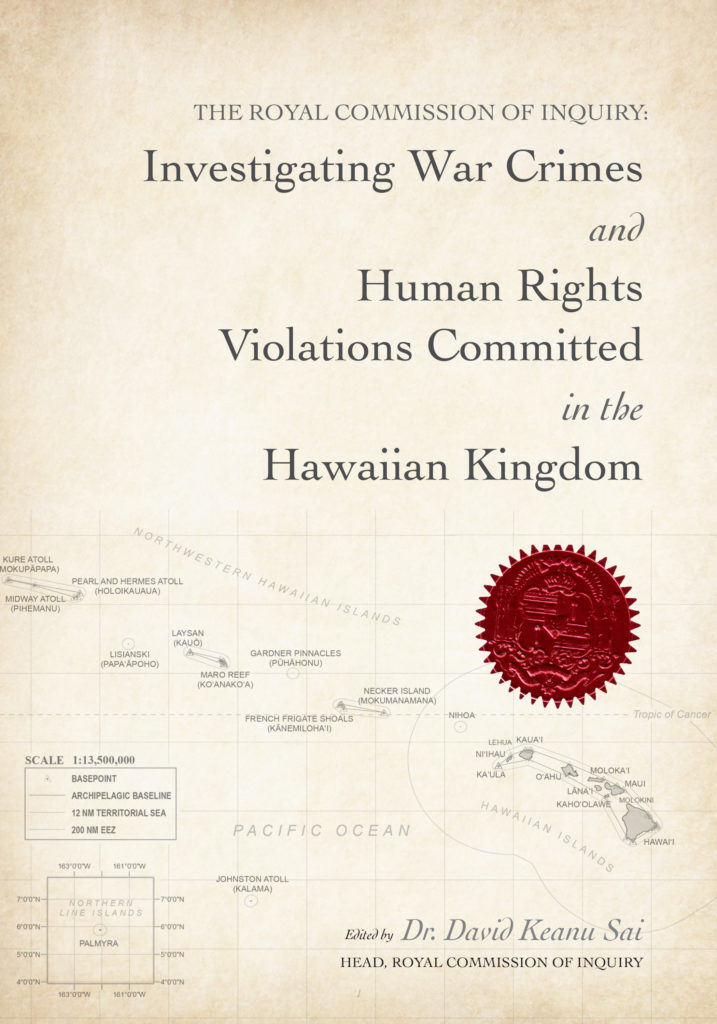On MSNBC’s Meet the Press, Dr. Michael Osterholm, Director of the Center for Infectious Disease Research and Policy at the University of Minnesota, said in an interview with host Chuck Todd, “What we have to do is figure out how not just to die with the virus, but also how to live with it. And we’re not having that discussion.”
Instead, the discussion around the world has been focused on a vaccine, which some have said could be done within 12 to 18 months from now. But Dr. Rick Bright, former director of the U.S. government’s Biomedical Advanced Research and Development Authority, told members of Congress, “It’s critical to note that when we say 12 to 18 months, that doesn’t mean for an FDA-approved vaccine, it means to have sufficient data and information on the safety and immunogenicity, if not efficacy, to be able to use on an emergency basis, and that is the consideration we have in mind when we talk about an accelerated timeline.”
World Health Organization’s emergencies expert, Dr. Mike Ryan, said on an online briefing, “It is important to put this on the table: this virus may become just another endemic virus in our communities, and this virus may never go away.”
Even after flattening the curve of infections throughout the islands, health experts are expecting a second wave. Unless preventive measures are taken to effectively control the entry of the virus from foreign countries, which includes the United States, a second wave could be devastating on the health and well-being of Hawai‘i’s people and the economy.
A New Legal Reality for Hawai‘i Has Emerged
Before the pandemic crisis reached the islands, undeniable facts had begun to reveal that Hawai‘i has been under a prolonged American occupation since January 17, 1893 after United States troops invaded the Hawaiian Kingdom and overthrew its government.
People have been under the false impression that since Queen Lili‘uokalani was overthrown so was the country. International law distinguishes between the government of the country and the country itself. It was the Queen as head of the government that was illegally overthrown by the United States and not the country the Hawaiian Kingdom.
This would be analogous to the United States military defeat of Saddam Hussein’s Iraqi government in Baghdad on April 9, 2003. The overthrow of the government did not affect the status of Iraq as a country, but it did bring the United States, as an occupying power, under the international law of occupation.
For over a century, the United States violated the international law of occupation in the Hawaiian Kingdom which led to the commission of war crimes and human rights violations committed with impunity.
International awareness of Hawai‘i’s occupation was accelerated due to the Larsen v. Hawaiian Kingdom arbitral proceedings held at the Permanent Court of Arbitration in The Hague from 1999-2001 that was based on the American occupation and the unlawful imposition of American laws within Hawaiian territory. Of significance, the Permanent Court acknowledged the continued existence of the Hawaiian Kingdom as a State, which is another word for country, and the Hawaiian Council of Regency as its interim government.
On the subject of Hawai‘i’s occupation and the commission of war crimes, Professor William Schabas, recognized expert in international criminal law, wrote: “In addition to crimes listed in applicable treaties, war crimes are also recognized under customary international law. Customary international law applies generally to States regardless of whether they have ratified relevant treaties. The customary law of war crimes is thus applicable to the situation of Hawai‘i.” Schabas also stated, “Statutory limitation of war crimes is prohibited by customary law.”
Also commenting on the prolonged occupation, international human rights expert, Professor Federico Lenzerini, stated, “among the rights which may be supposed of having been violated by the United States as a result of the occupation of the territory of the Hawaiian Kingdom particular attention should be devoted to those inherently connected to the violations of international humanitarian law determined by the occupation. These violations…would first of all need to be treated as war crimes, which are primarily to be considered under the lens of international criminal law.”
To read Professors Schabas’ and Lenzerini’s full opinions on war crimes and human rights violations and the role of the Hawaiian Royal Commission of Inquiry download the free eBook The Royal Commission of Inquiry: Investigating War Crimes and Human Rights Violations Committed in the Hawaiian Kingdom.
What effect does this new legal reality have in dealing with COVID-19? The simple answer is that international law broadens the scope as to how to deal with the virus that did not exist before. In particular, it provides for legal authority to close the borders.
Here is a relevant Hawaiian proverb. “I ke au i hala ka lamaku o ke ala i ke kupukupu.” (The past is the beacon that will guide us into the future)
Why the International Law of Occupation Applies to Hawai‘i
The silver lining in the international law of occupation takes the position that Hawai‘i, which is known internationally as the Hawaiian Kingdom, remains its own separate country despite over a century of an illegal occupation by the United States. As an occupied country, decisions are not made by inept leadership at the United States federal level but rather by the rules of international humanitarian law, which includes the law of occupation, by those who are in effective control of Hawaiian territory.
There are two important tenets of the law of occupation. First, is the duty of the occupying power or its proxy to administer the laws of the Hawaiian Kingdom, and, second, the protection of the health and well-being of the Hawaiian Kingdom’s inhabitants that are both Hawaiian subjects and resident aliens. Occupations by foreign countries are regulated by the 1907 Hague Regulations and the 1949 Fourth Geneva Convention.
However, before the Hague Regulations and the Geneva Convention can be applied over the Hawaiian Islands, the occupying power or its proxy has to be in effective control of the territory. For without effective control, there would be no enforcement mechanism for ensuring effective governance. Article 42 of the Hague Regulations states that “Territory is considered occupied when it is actually placed under the authority of the hostile army.”
Article 42 has three requisite elements before the duty to administer the laws of the occupied country becomes obligatory upon the occupying power or its proxy. First, there must be the presence of a foreign country’s forces; second, the exercise of authority over the occupied territory by the foreign country or its proxy; and, third, the non-consent by the occupied country’s government.
In March of 1893, President Grover Cleveland initiated a presidential investigation into the overthrow of the government of the Hawaiian Kingdom on January 17, 1893 and the creation of the provisional government. After completing the investigation, he notified the Congress of his findings on December 18.
In his message to the Congress, he stated, that a protest “signed by the Queen and her ministers at the time she made way for the provisional government, which explicitly stated that she yielded to the superior force of the United States, whose Minister had caused United States troops to be landed at Honolulu and declared that he would support such provisional government.”
As to the status of the provisional government, the President stated, “I believe that a candid and thorough examination of the facts will force the conviction that the provisional government owes its existence to an armed invasion by the United States. Fair-minded people with the evidence before them will hardly claim that the Hawaiian Government was overthrown by the people of the islands or that the provisional government had ever existed with their consent.”
The President also concluded, “In this state of things if the Queen could have dealt with the insurgents alone her course would have been plain and the result unmistakable. But the United States had allied itself with her enemies.”
The President entered into an agreement of restoration with the Queen as head of the Hawaiian government but political wrangling in the Congress prevented the restoration because proponents in the Congress wanted Hawai‘i as a military outpost.
The only change in the Hawaiian governmental infrastructure was the Queen and her Cabinet that was replaced by 18 insurgents calling themselves the Executive and Advisory Councils. Everyone else in the governing body remained but were coerced into signing oaths of allegiance to the regime while United States military forces were present.
A colloquial term for the illegal overthrow would be a “car-jacking.” All that was changed was the driver and not the car.
Five years later on July 7, 1898, during the Spanish-American War, the Congress passed a law purporting to have annexed the Hawaiian Islands. The United States took control of their insurgents, who were then calling themselves the Republic of Hawai‘i, in 1900 when Congress renamed them as the Territory of Hawai‘i. In 1959, the Congress renamed the Territory to the State of Hawai‘i. What changed was merely the names of purported governments and not the legality of the situation.
A basic principle of United States law is that legislation has no legal effect outside of its territory. In other words, the Congress could no more annex the Hawaiian Islands in 1898 by enacting a law than it could no more annex Canada today by enacting a law. Acquisition of foreign territory is a matter of international law and is done by a treaty. There is no treaty of cession between the Hawaiian Kingdom and the United States.
In 1936, the United States Supreme Court, in United States v. Curtiss Wright Export Corp, made clear, “Neither the Constitution nor the laws passed in pursuance of it have any force in foreign territory unless in respect of our own citizens, and operation of the nation in such territory must be governed by treaties, international understandings and compacts, and the principles of international law.”
Mindful of the territorial limits of American legislation, the Office of Legal Counsel for the U.S. Department of Justice, in 1988, concluded “it is therefore unclear which constitutional power Congress exercised when it acquired Hawaii by joint resolution.” If it was unclear how the Congress could annex a foreign country, it would be equally unclear how the Congress could have created the Territory of Hawai‘i in 1900 or the State of Hawai‘i in 1959 in a foreign country.
Instead of a treaty, the United States embarked on an effective policy of denationalization through Americanization in the schools throughout the kingdom. It was here that young school children were brainwashed into believing that the Hawaiian Islands had become a part of the United States and that English was the new language. Within three generations, Hawaiian national consciousness was replaced with American national consciousness and the greatest travesty of international law would go unnoticed for over a century.
For a comprehensive explanation of the overthrow and the subsequent American occupation visit the National Education Association’s website neaToday that published three articles on the subject. The “NEA’s 3 million members work at every level of education—from pre-school to university graduate programs. NEA has affiliate organizations in every state and in more than 14,000 communities across the United States.”
How Does the Law of Occupation Apply to COVID-19 in Hawai‘i
The United States presence in the Islands is illegal and its current form of governance has been unlawfully imposed for over a century. But to apply international laws, there needs to be an understanding of the current system, albeit unlawful, in order to understand how to transform the State of Hawai‘i into something recognizable under international law in order begin to comply with the laws of occupation so that administration of the laws of the Hawaiian Kingdom can begin.
The United States is a multitiered governing system called a federation. At the top is the national or federal government, headed by a president, and below it are the various States that are headed by governors. In the case of the State of Hawai‘i, there are the four County governments below the State who are headed by mayors.
As a proxy of the United States, only the State of Hawai‘i and its Counties, and not the federal government, are in effective control of Hawaiian territory. By being in effective control, the State of Hawai‘i and the Counties meets the requirement of effectiveness under Article 42 of the Hague Regulations.
Under Article 43 of the Hague Regulations and Article 64 of the Geneva Convention, the State of Hawai‘i and its Counties are obligated to administer the “laws in force in the country,” which in this case would be the laws of the Hawaiian Kingdom as it stood before the illegal overthrow of the Hawaiian Government on January 17, 1893.
With particular focus on infectious diseases, Article 54 of the Geneva Convention states that the occupying power or its proxy has the obligation to ensure and maintain, “public health and hygiene in the occupied territory, with particular reference to the adoption and application of the prophylactic and preventative measures necessary to combat the spread of contagious diseases and epidemics.”
Professor Marco Sassòli, an expert on the law of occupation, explains, “The expression ‘laws in force in the country’ in Article 43 refers not only to laws in the strict sense of the word, but also to the constitution, decrees, ordinances, court precedents (especially in territories of common law tradition), as well as administrative regulations and executive orders.” Administrative regulations that would specifically apply to the pandemic would include those of the Hawaiian Kingdom’s Board of Health and the Board of Immigration.
As smallpox and COVID-19 are both viruses, there is much to learn from the Hawaiian Kingdom’s past. Like COVID-19, the smallpox virus would spread from person to person by inhaling respiratory droplets or contact with infected persons or material. Smallpox was not eradicated until 1977.
In the nineteenth century, inoculation was the form of a vaccine, but this was a preventive measure. Also, inoculation was not full proof but it was all the nineteenth century had at the time. Once a person became infected there was no medical treatment and all that could be done was to provide hospital care until the virus ran its course. Once an outbreak occurred, quarantine was the only effective response in order to contain the virus. According to the World Health Organization, smallpox had “an incubation period of between 7 and 17 days after exposure and only becomes infectious once the fever develops,” and had a 30% death rate.
Living with Infectious Viruses in the Hawaiian Kingdom
The 1853 smallpox epidemic in the Hawaiian Kingdom was the most devastating health disaster in Hawai‘i’s history with over 5,000 deaths, which meant roughly 16,500 people were infected. The infections and death were predominantly in the city of Honolulu.
Hawaiian historian, Samuel Kamakau, who witnessed the ravage, wrote, “From the last week in June until September the disease raged in Honolulu. The dead fell like dried kukui twigs tossed down by the wind. Day by day from morning till night horse-drawn carts went about from street to street of the town, and the dead were stacked up like a load of wood, some in coffins, but most of them just piled in, wrapped in cloth with heads and legs sticking out.”
The government reported, “No new cases of smallpox has been reported. Those already existing are doing well. The health of the city is otherwise generally good.” After two-months the epidemic passed and Honolulu was virus free.
This was a test for the newly created Smallpox Commission that was established by statute on May 16, 1853. The statute’s preamble stated, “Whereas, the Small-Pox is believed to exist in this Kingdom, and humanity and a just regard to life require that all who are affected with that disease should receive strict care and attention, and whereas it is desirable that the disease shall not extend through the Islands.” Following the outbreak, an Act was passed by the legislature on August 10, 1854 making “compulsory the practice of vaccination throughout the Hawaiian Islands.” The Board of Health eventually assumed complete control in response to future smallpox outbreaks.
After the King, in Privy Council, in 1869 concluded that smallpox was endemic to the west coast of the United States and posed a direct threat to the health and well-being of Hawai‘i’s people, Mokuakulikuli—known today as Sand Island, was designated as the Quarantine Ground. The Hawaiian Gazette reported, “Altogether, about ninety persons can be comfortably accommodated at the quarantine buildings.”
Vaccinations in the nineteenth century were not full proof and another outbreak of smallpox hit Honolulu in 1881 that lasted just over five months. 282 people lost their lives.
There were hard lessons learned from the second outbreak that eventually culminated in the Board of Health’s adoption of a more comprehensive and authoritative quarantine regulations in 1891. The regulations focused on incoming passenger and merchant ships arriving from foreign ports.
Under these quarantine regulations, full authority and centralized control was vested in the Board of Health to make on the spot decisions that had the backing of the Hawaiian government through enforcement. The regulations were driven by medical experts and not politicians.
The regulations also provided who was responsible for the costs of the quarantine, which would not be incurred by the Hawaiian government. If payment was refused, the ship and/or assets were seized and liquidated to pay for the costs the government incurred.
1891 Quarantine Regulations
- The Board of Health may, from time to time, establish the quarantine to be performed by all vessels arriving at any port of the Kingdom, and may make such quarantine regulations as may be deemed necessary for the public health and safety. (Civil Code, Section 292).
- The quarantine regulations so established shall extend to all persons, goods and effects, arriving in such vessels, and to all persons who may visit or go on board of the same. (Civil Code, Section 293).
- Notice shall be given of such quarantine regulations by publication in the manner provided in Section 284 of the Civil Code; after which notice, any person violating such quarantine regulations shall be fined a sum of not less than five dollars (equivalent to $144.04 today) nor more than five hundred dollars (equivalent to $14,403.78). (Civil Code, Section 294).
- Any vessel which shall refuse to submit to quarantine or which shall leave the quarantine ground before the expiration of the quarantine imposed upon her, or which shall be the means of clandestinely introducing into this Kingdom any contagious disease, or any disease dangerous to the public health, shall be liable to seizure, confiscation and sale for the benefit of the public treasury. (Civil Code, Section 295).
- The Board of Health or its agents may at any time cause a vessel arriving at any port in this Kingdom, when they deem such vessel, or any part of its cargo, to be foul, infected, or in any way dangerous to the public health, to be removed to the nearest quarantine ground, and to be thoroughly purified at the expense of the owners, consignees or persons in possession of the same; and they may also cause all persons arriving in or going on board of such vessel, or handling such infected cargo, to be removed to some place of safety, there to remain under their orders. (Civil Code, Section 296).
- If any master, seaman, or passenger, belonging to a vessel on board of which there may be at the time, or may have lately been, or suspected to have been any infectious or contagious disease, or that which may become the source of such disease, or which may have been at or have come from a port where any infectious or contagious disease prevailed that may endanger the public health, shall refuse to make answer on oath to such questions as may be asked him, relating to said disease, or possible source of disease, by the Board of Health or its agents, such master, seaman, or passenger, so refusing, shall be punished by fine not exceeding five hundred dollars (equivalent to $14,403.78), or be imprisoned with hard labor for not more than twelve months, or both, at the discretion of the Court. (Civil Code, Section 297).
- Upon arrival of any vessel making the usual marine signal for a pilot, it shall be the duty of pilot or pilots at the port, to immediately put off such vessel, taking with him a white and yellow flag, to inquire into the sanitary condition of the ship and the health of those on board; and upon being assured to satisfaction that there is no danger to be apprehended from any contagious disease, he shall board the vessel, but not otherwise. (Civil Code, Section 594).
- Upon boarding the vessel, the pilot shall present to the commanding office a heal certificate to be signed by him, and in case the same shall be signed, the white flag shall be immediately hoisted at the main, and the pilot shall be at liberty to bring the vessel into port; but in case the commanding officer shall decline to sign the certificate of health, the pilot shall deliver to him a yellow flag, which the master shall hoist at the main, and the vessel shall be placed in quarantine outside of the harbor, and anchored where the pilot may direct. Any pilot who shall conduct a vessel into any port in this Kingdom, in violation of provisions of this section, or any of the regulations of the Board of Health, or knowing that there is just ground to suspect the existence of contagion on board, shall be liable to fine not exceeding five hundred dollars (equivalent to $14,403.78); and every vessel, the master of which shall have declined to sign a certificate of health, as above prescribed, shall upon entering port, be liable to seizure, confiscation and sale. (Civil Code, Section 595).
- If the Pilot, after boarding any vessel, shall discover the existence of any infectious or contagious disease, be shall not return on shore without the permission of the Board of Health; neither shall it be lawful for any of the ship’s company or passengers to land, or communicate with the shore, or to board any other vessel without the permission of the Board of Health, or the Collector, under penalty of a fine not exceeding five hundred dollars (equivalent to $14,403.78). (Civil Code, Section 596).
- The Board of Health and its agents may from time to time, at their discretion, appoint certain places within or near any harbor or anchorage in the Hawaiian Islands, for the performance of quarantine, where all or any vessel or vessels, crews, passengers and other person on board thereof, shall perform the same; and also may appoint stations apart from such vessels, where any persons or things shall be detained for the performance of quarantine.
- Every vessel arriving off any port of these Islands, may be boarded by the Port Physician, who shall examine personally the crews and passengers, and if satisfied that no contagious or infectious disease, that is dangerous to the public health, exists, or has recently existed on board, he shall give the Captain a certificate to that effect; but if not so satisfied, he shall give the Captain a certificate to that effect; but if not satisfied, he shall order the Pilot to anchor the vessel outside of the harbor and notify the Board of Health of the facts. No vessel may enter the harbor or any port of this Kingdom, when forbidden to do so by the Port Physician of said port.
- All expenses incurred on account of any person, vessel, or goods, shall be paid by such person, vessel or owner, or consignee of such vessel or goods, the vessel causing them not receiving a permit to quit the port until said expenses are paid.
- In every case where a vessel is boarded by the Port Physician, his fees and expenses shall be paid by the vessel or its representatives; and if said vessel or its representatives decline to pay these fees, the Collector of Customs shall collect them and shall not grant a clearance to said vessel until such fees and expenses shall have been paid.
- The resident physicians who are, or shall be appointed by the Government to take charge of the various districts of these Islands, except Honolulu, are hereby appointed by the Board of Health to act as Port Physicians for all ports in their several districts.
- If a vessel, passing on to another port or country, wish to land persons or goods in any port of these islands, the said vessel being obliged to undergo quarantine under the provisions of the previous Sections and these regulations, the person or goods entering said ports of these Islands may be landed and shall undergo such quarantine or other treatment as the Board of Health shall order, after which the vessel shall be free to depart, when her quarantine is raised.
- On the arrival of a vessel at any port of this Kingdom, coming from a port known to be infected with cholera, yellow fever, smallpox, scarlet fever, plague or any other contagious or infectious disease deemed by the Board of Health to be dangerous to public health, although no case of such disease may have broken out on board during the voyage, the officers, crew and passengers of such vessel may be kept in quarantine until a period of eighteen days shall have elapsed from the time of her leaving said infected port; and the vessel herself and her cargo shall undergo such process of cleansing and disinfection as the Board of Health shall judge necessary.
- On the arrival of a vessel at any port of this Kingdom which has or has had on board during the voyage, any person sick with smallpox or scarlet fever, (1,) the sick persons, if passengers for that port, shall be sent to the quarantine hospital for such a period as may be deemed necessary; (2,) the officers, crew, well passengers and other persons on board shall be placed in quarantine apart from the aforesaid, for such period as may be deemed necessary by the Board of Health; (3,) and the whole or part of the ship and its cargo shall undergo such fumigation and disinfection as the Board may deem necessary. But with regard to all sick passengers other than passengers for that port, and with regard to all persons sick with cholera, yellow fever or plague, and with regard to all persons sick with cholera, yellow fever or plague, the Board will not consider itself bound to receive them or to take care of them in quarantine.
- No person shall leave or visit any quarantined vessel, or any house, enclosure or place set apart for quarantine purposes; unless by written permission of the President of the Board of Health, or some agent authorized by said Board.
- Under no circumstances provided for by the last preceding regulation, shall clothing, personal baggage, or any goods be allowed to be landed from any vessel or removed from any place, before having undergone such disinfecting process as may be ordered by the Board of Health; nor shall letters or mails be landed in Honolulu except by written permission of the President of the Board of Health, or in any other district of the Kingdom except by permission of the District Port Physician.
- Vessels arriving from an Asiatic port, or from any port reported to be infected with cholera, yellow fever, or smallpox shall not enter any port of this Kingdom, though such vessels may show a clean bill of health, until special permission is granted by the Board of Health for entry into the port of Honolulu, or by a duly accredited agent of the Board for entry at any other port in the Hawaiian Islands. Such vessels shall be anchored on quarantine ground, at such places as may be chosen by the Pilot under direction of the Port Physician, and remain at such anchorage until changed or admitted into port by the Board of Health.
- The Board of Health may order the fumigation and disinfection of all personal effects from Asiatic ports.
- Any vessel placed in quarantine shall fly a yellow flag at the main by night and shall keep such signals hoisted until released from quarantine.
- It shall be the duty of the Pilot to deliver to the commanding officer of any vessel he may board a copy of the aforesaid quarantine regulations, with which he shall be provided by the Board of Health for that purpose.
Although these regulations were applied to arriving ships throughout the kingdom, they are applicable today to airplanes arriving throughout the various airports as well.
If the United States or its proxy the State of Hawai‘i was complying with the international law of occupation by administering the laws of the Hawaiian Kingdom, COVID-19 would have been detected much sooner and quarantine measures would have taken effect followed by a lockdown of the borders to prevent foreign travelers from re-introducing the virus.
Hawaiian Bureau of Immigration and the Authority to Deny Entry
The legislature in 1864 established a Bureau of Immigration within the Ministry of the Interior. Its purpose was “superintending the importation of foreign laborers, and the introduction of immigrants.” The Bureau came under the control of the Minister of the Interior who was “assisted by a committee of five members of the Privy Council of State, to be appointed by His Majesty the King for that purpose.”
On January 14, 1880, the Bureau enacted an ordinance regulating immigration. In particular, Section 7 of the ordinance provided, “Immigrants not desiring to make engagements for labor shall, before leaving the depot, furnish to the President of the Board of Immigration satisfactory evidence that they will not become vagrants or a charge on the community for their support.”
Section 7 was the basis for the denial of a petition for writ of habeas corpus to the Hawaiian Kingdom Supreme Court by two passengers that completed quarantine for smallpox but were still detained by the Minister of the Interior because they did not satisfy section 7 of the regulations of the Board of Immigration.
Before the second outbreak of smallpox in Honolulu, the steamship Septima arrived in Honolulu from China on February 13, 1880. It was determined by the Board of Health that the virus existed amongst the passengers and they were removed to Sand Island for quarantine.
After they were cleared of smallpox by the Board of Health, authority was then passed over to the Board of Immigration. They were further detained by the Minister of the Interior until each of the passengers provided evidence that “they will not become vagrants or a charge on the community for their support.”
Two of the passengers from China refused to agree with section 7 of the regulations and claimed that the ordinance, itself, was unlawful because it was not a law passed by the legislature. In the Matter of Chow Bick Git and Wong Kuen Leong, the Hawaiian Kingdom Supreme Court, in 1881, not only denied the petition by upholding the Board of Immigration’s ordinance as constitutional, it also addressed the authority of the Hawaiian government to deny entry of foreigners.
After the Court cited Vattel’s Law of Nations and the passenger cases before the United States Supreme Court on a State’s authority to deny entry into its territory by foreigners, Associate Justice Albert F. Judd provided a separate opinion in agreement with the Chief Justice. He further stated:
“the State has a right to impose such terms and conditions precedent to the entry of foreigners within its borders as in its opinion are essential to its welfare, peace and good government. I see no reason why a sovereign State may not prescribe these terms, even in the absence of municipal law declaring what they shall be. The State may say to those who seek to become residents within its territory, ‘We will admit you, providing you accede to these terms which we deem to be reasonable and necessary.’”
Living with COVID-19 in the Hawaiian Islands
The American response of “flattening the curve” is an American policy to prevent its hospitals from being overwhelmed until a vaccine can be found. A full proof smallpox vaccine did not exist until the twentieth century where the last natural outbreak of smallpox in the United States occurred in 1949. In the meantime, the Hawaiian Kingdom had to live with the virus and its defense was hospital care and quarantine measures.
Instead of “flattening the curve,” Hawai‘i, like in the nineteenth century, should focus on “eliminating the virus” throughout the Islands by closing the borders until the virus completes its infectious incubation period. During this time, test, tracing and quarantine continues.
In an interview on KITV Island News, Dr. Bruce Anderson from the State of Hawai‘i Board of Health acknowledged that countries that have good quarantine programs and who have the ability to control their borders are relying largely on quarantine and not testing.
New Zealand, like Hawai‘i, is an island country that can control their borders much more effectively than landlocked States of the United States. The ocean now becomes a moat for the defense of a castle.
Advised by epidemiologists, Prime Minister Jacinda Ardern announced on March 14 that almost everyone coming into New Zealand would have to self-quarantine for 14 days. It was one of the earliest moves to isolate a country in the world. A total lockdown for the country followed on March 26 with a moratorium on domestic travel.
The government eventually closed its borders except for “New Zealand citizens, permanent residents and residents with valid travel conditions.” It later allowed transiting travelers to certain countries but they were required to remain in the airport and if the transit flight would be more than 24 hours they cannot enter New Zealand.
The Prime Minister explained, “We’re going hard and we’re going early. We only have 102 cases, but so did Italy once.” The goal of the New Zealand government, with the closing of the borders, was to not have any more community transmissions.
By late April, infections dropped to seven, which motivated the government to ease on its domestic lockdown. On April 21, the Prime Minister told Radio New Zealand, “We can say with confidence that we do not have community transmission in New Zealand. The trick now is to maintain that.”
The Prime Minister, being advised by epidemiologists, said she was not seeking to eradicate the virus from the country but rather have “zero tolerance for cases.” Her advisors stated their approach would be similar to a response to measles with swift response of medical treatment for those infected, contact tracing and isolation. This is how the Hawaiian Kingdom lived with infectious viruses in the nineteenth century that arrived into the country, swiftly moving to identify infected persons, provide care and quarantine.
According to New Zealand’s Ministry of Health, “effective border control becomes even more important than before. As people within New Zealand are able to travel and mix more freely, the ability of COVID-19 to spread potentially increases. So we must keep it out at the border. We already know the border is one of the main sources of new cases of COVID-19.”
Hawai‘i should follow New Zealand’s lead but it first needs to comply with the law occupation as a governing body recognizable under international law. Once COVID-19 is eliminated in the islands and the borders remain closed under the regulations of the Hawaiian Board of Immigration, interisland flights can resume and Hawai‘i can get back to pre-pandemic life with some adjustments just as the country did after the 1881 breakout of smallpox.
No Choice for the State of Hawai‘i to Comply with the Law of Occupation
Since 1898, the United States, through its proxy the Territory of Hawai‘i since 1900 and now the State of Hawai‘i since 1959, has been illegally imposing its municipal laws throughout the Hawaiian Islands. Customary international law refers to this unlawful imposition of one country’s laws into the territory of an occupied country as “usurpation of sovereignty,” which is a war crime.
“In the situation of Hawai‘i, the usurpation of sovereignty would appear to have been total since the beginning of the twentieth century,” says Professor Schabas. He argues “that usurpation of sovereignty is a continuous offense, committed as long as the usurpation of sovereignty persists.”
Professor Schabas states that the criminal act, or actus reus, of usurpation of sovereignty “would consist of the imposition of legislation or administrative measures by the occupying power that go beyond those required by what is necessary for military purposes of the occupation.” In other words, if a person or persons imposed American legislative or administrative measures in Hawai‘i you committed the war crime.
The volitional element, or criminal intent, of usurpation of sovereignty,” according to Professor Schabas, is that the “perpetrator was aware of factual circumstances that established the existence of the armed conflict and subsequent occupation.” What is important is not just the criminal act but was there criminal intent to commit the criminal act.
If there was no awareness of the American occupation, there was no intent for prosecution purposes. In other words, was Governor David Ige aware of Hawai‘i’s occupation?
On three separate occasions in June of 2015, Governor Ige’s Chief of Staff Mike McCartney met with Dr. Keanu Sai who was at the time the attorney-in-fact for two war crime victims who were in communication with the Swiss Attorney General’s office for war crimes. Dr. Sai conveyed to McCartney that his clients were willing to forgo filing war crime complaints if the Governor would take corrective measures to address the circumstances of the two victims.
The following month on July 2, Dr. Sai provided McCartney a Report that covered what was discussed in the three meetings and a proposed remedy in line with international law and the relevant rules of the States of Hawai‘i. The opening statement in Dr. Sai’s cover letter stated:
“Enclosed please find a report I authored, titled Military Government: Transformation of the State of Hawai‘i, for your consideration. As you know after we met on three previous occasions, this is a serious matter with profound political and economic consequences. After our last meeting I scoured through the laws and customs of war and international humanitarian law, and I discovered that the State of Hawai‘i is fully authorized to declare itself as a Military Government in accordance with provisions in the State Constitution and the laws and customs of war during occupation.”
McCartney, for whatever reason, did not follow up with Dr. Sai. What is not clear is why there was no follow up. What is unquestionably clear, for the purpose of criminal culpability under international law, is that Governor Ige’s administration was “aware of factual circumstances that established the existence of the armed conflict and subsequent occupation” for the past five years.
Governor Ige was also made aware of Hawai‘i’s occupation by Maui County Council member Tamara Paltin who was communicating with University of Hawai‘i President David Lassner regarding the proposed building of the thirty-meter telescope on the summit of Mauna Kea. Governor Ige and the Attorney General were carbon copied in the communications.
How the State of Hawai‘i Will Comply with the Law of Occupation
In decision theory, a negative-sum game is where everyone loses. Any decision from a loss can only have the effect of a loss—a lose-lose situation. The State of Hawai‘i is presently operating from a position of no lawful authority, and everything that it has done or that it will do is unlawful. There can be no fruit from a poisonous tree. The rapidly growing knowledge and awareness of the prolonged occupation of Hawai‘i has the effect of causing the State of Hawai‘i to speedily descend and crash.
The State of Hawai‘i has found itself in a mammoth negative-sum game. In order to stave off the inevitable, the Council of Regency and the State of Hawai‘i must cooperate so that positive-sums are realized. The law of occupation provides the legal basis for the State of Hawai‘i to realize positive-sums.
Critical to the administration of Hawaiian law is the establishment of a Military government recognizable under international law, which is “defined as the supreme authority exercised by an armed occupying force over the lands, properties, and inhabitants of an enemy, allied, or domestic territory.”
The establishment of a Military government is not limited to the U.S. military, but to a proxy of the Occupying power that is in effective control of occupied territory. Section 4(b), U.S. Army Field Manual FM 27-5, provides that an occupying Power “has the duty of establishing [Military government] when the government of such territory is absent or unable to function properly.”
What distinguishes the U.S. military stationed in the Hawaiian Islands from the State of Hawai‘i is that the State of Hawai‘i, as a proxy of the United States, is in effective control of the majority of Hawaiian territory. U.S. military sites number 118 that span 230,929 acres of the Hawaiian Islands, which is only 20% of the total acreage of Hawaiian territory. The balance of Hawaiian territory is controlled by the State of Hawai‘i and its Counties.
As a proxy for the Occupying power, the State of Hawai‘i has no choice but to establish itself as a Military government, which is allowable under the laws of occupation, to provisionally serve as the administrator of the “laws in force in the country.”
According U.S. Army FM 27-10, “Military government is exercised when an armed force has occupied such territory, whether by force or agreement, and has substituted its authority for that of the sovereign or previous government. The right of control passes to the occupying force limited only by the rules of international law and established customs of war.”
The proclamation for the establishment of a Military government would be done in like fashion to the declaration of martial law for the Hawaiian Islands from December 7, 1941 to April 4, 1943. Governor Joseph Poindexter and Lieutenant General Walter Short relied on section 67 of the 1900 Territorial Act as the basis to establish a Military government. The Governor appointed General Short as the Military Governor in charge of the Military government.
The 1941 proclamation, however, required the prior approval of President Franklin D. Roosevelt, since the Governor of the Territory of Hawai‘i was a Presidential appointee.
When the Territory was transformed to the State of Hawai‘i in 1959, section 67 was replaced by Article V, section 5 of the State of Hawai’i Constitution, which gives the Governor full and complete authorization to declare the establishment of a Military government without the prior approval of the President.
In order to transform the State of Hawai‘i into a Military government, the Governor will need to decree, by proclamation, the establishment of a Military government in accordance with Article V, section 5 of the State of Hawai’i Constitution, which will bring it in conformity with section 5(3) of FM 27-5 that states the purpose of a Military government is to “fulfill the obligation of the occupying force under international law.”
Additionally, the proclamation should also decree that all State of Hawai‘i judicial and executive officers and employees remain in operation with the exception of the legislative bodies to include the Legislature and County Councils. This reasoning is because “since supreme legislative power is vested in the military governor, existing legislative bodies will usually be suspended.”
Although the Council of Regency recognized “the State of Hawai‘i and its Counties, for international law purposes, as the administration of the Occupying Power whose duties and obligations are enumerated in the 1907 Hague Convention, IV, the 1949 Geneva Convention, IV, and international humanitarian law,” by proclamation on June 3, 2019, it failed to transform itself into a Military government.
A condition of the recognition, as stated in the proclamation, was “that the State of Hawai‘i and its Counties shall preserve the sovereign rights of the Hawaiian Kingdom government, and to protect the local population from exploitation of their persons and property, both real and personal, as well as their civil and political rights under Hawaiian Kingdom law.”
The State of Hawai‘i and its Counties have not preserved the sovereign rights of the Hawaiian Kingdom and has continued to exploit the local population by imposing the legislative and administrative measures of the United States. Once the State of Hawai‘i transforms itself into a Military government, the recognition takes effect.
Until such time, members of the State of Hawai‘i and its Counties could find themselves under investigation for war crimes by the Royal Commission of Inquiry that was established by the Council of Regency on April 17, 2019.
The mandate of the Royal Commission is “to investigate the consequences of the United States’ belligerent occupation, including with regard to international law, humanitarian law and human rights, and the allegations of war crimes committed in that context. The geographical scope and time span of the investigation will be sufficiently broad and be determined by the head of the Royal Commission.”
The Royal Commission recently published an eBook Investigating War Crimes and Human Rights Violations Committed in the Hawaiian Kingdom, as well as its first preliminary report The Material Elements of War Crimes and Ascertaining the Mens Rea.
Bringing Hawaiian Kingdom Law Up To Date
Because United States laws, to include the current federal laws and laws of the State of Hawai‘i and its Counties, are unlawful, the only valid laws in Hawai‘i are the laws of the Hawaiian Kingdom, which include “the constitution, decrees, ordinances, court precedents, as well as administrative regulations and executive orders.”
In order to bring these laws up to date, the Council of Regency proclaimed on October 10, 2014, that “all laws that have emanated from an unlawful legislature since the insurrection began on July 6, 1887 to the present, to include United States legislation, shall be the provisional laws of the Realm subject to ratification by the Legislative Assembly of the Hawaiian Kingdom once assembled, with the express proviso that these provisional laws do not run contrary to the express, reason and spirit of the laws of the Hawaiian Kingdom prior to July 6, 1887, the international laws of occupation and international humanitarian law, and if it be the case they shall be regarded as invalid and void.”
Once the Military government has been proclaimed, the Governor should follow up with a supplemental proclamation announcing the Council of Regency’s proclamation of provisional laws.
Reality Check
These are serious times in Hawai‘i for those in power. Since 1893, this power has been unchecked and unbridled but now under the international law of occupation and international criminal law the rule of law has now taken its place front and center.
The decision to transform the State of Hawai‘i into a Military government is not a political decision. It is a decision made in light of indisputable facts, international law, and awareness of the American occupation of a sovereign State.
As Professor Schabas stated, which is also acknowledged by the International Criminal Court, there “is no requirement for a legal evaluation by the perpetrator” of Hawai‘i’s occupation. Rather, there “is only a requirement for the awareness of the factual circumstances that established the existence” of Hawai‘i’s occupation.
Without evidence that denies the continued existence of the Hawaiian Kingdom, international criminal law is a vice grip on individuals where the potential for the prosecution of war crimes can last up to a person’s elderly years. As Professor Schabas stated, “human longevity means that the inquiry into the perpetration of war crimes becomes abstract after about 80 years, bearing in mind the age of criminal responsibility.”

